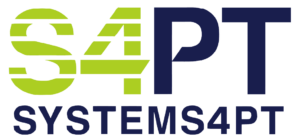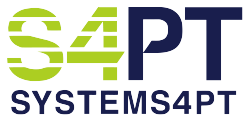Medicare Audit: Lessons Learned from Six Months of Scrutiny
Interview with Scott Gardner, DPT and owner of FYZICAL Delmarva. Scott owns practices in Delaware, Maryland, and Virginia, and just completed dual Medicare audits.
Interview
The following acronyms are used throughout the interview:
UPIC: Medicare Unified Program Integrity Contractor
TPE: Medicare Targeted Probe and Educate program
MAC: Medicare Administrative Contractor
LCD: Local Coverage Determinations
S4PT: Hi Scott. Congratulations on your recent Medicare audit results! After successfully passing a three-month UPIC (Medicare Unified Program Integrity Contractor) audit, your network then underwent a subsequent TPE (Medicare Targeted Probe and Educate program) audit. The TPE audit scored 100 out of 100 possible points.
SCOTT: Thank you. It was a pretty intense distraction. I’m thankful we had the systems in place to succeed like we did.
S4PT: Most practice owners have not been audited by Medicare, let alone audited by both the UPIC and TPE within the same year. What advice would you give the practice owner who receives notice that they’re going to be audited?
SCOTT: You want to be prepared BEFORE they knock on your door. The UPIC audit occurred last October. The TPE audit occurred this May about 3 months after passing the UPIC. They will ask you a lot of questions about your practice. The key to passing these audits is to keep your cool, have your policy and procedures up to date, and make sure your documentation will pass their review. Every MAC (Medicare Administrative Contractor) will have an LCD (Local Coverage Determinations) manual. Make sure you are following the guidelines set forth in it.
S4PT: What was it like being audited? My imagination conjures up stark figures in trench coats. What were the people like? What type of information did they ask for?
SCOTT: Just individuals doing their job. They were very nice. They are looking to see if you are following what is in the LCD. They want to know if the documentation supports the need for skilled physical therapy. They will ask for the entire chart, so make sure every “i” is dotted and every “t” is crossed. The UPIC Audit is different than the TPE audit. I suggest you familiarize yourself with both.
S4PT: How long did the process take?
SCOTT: Three months for each audit.
What were the auditors looking for? And what did they find?
They were checking whether my documentation had all the requirements that are in my MAC’s LCD manual. Fortunately, I knew my LCD well and my documentation reflects what they look for when reviewing a chart. Using Systems 4PT helped tremendously as the hard stop at visit 10 ensured that we always had a 10th visit progress note. Current and forecasted functional limitations were important, and these were easy to document with the EBM (evidence-based medicine) button. Also, the hundred or so words of defensive documentation that defend the severity of each evaluation code were another key point. I appreciate that this defensive documentation is built into S4PT.
They found our documentation to be good and it was easy for them to follow the progression of patient through rehab. All paperwork supported the need for skilled intervention. All claims reviewed passed the audit on both UPIC and TPE.
I honestly think that choosing Systems 4PT was a huge factor in us passing. The constant prompting during evaluations makes certain you have the proper documentation, the loading of defensible documentation after completing the patient’s automated check in, the webinars that go over changes in Medicare requirements…this all helped to keep us on the cutting edge. But ultimately, it’s up to the therapist to take the time to document progression. The days of “feeling better” and “tolerated treatment well” are over.
S4PT: Silly question, but were the auditors happy that you were compliant? Were they complimentary? Or were they bummed that they didn’t find problems?
SCOTT: They were smart, focused, and professional, but they held things close to the vest. I didn’t know where we stood in the audit unit the final report. It was pretty nerve wracking. After it was all said and done, they were very pleased and they were complimentary.
S4PT: What advice do you have for practice owners who are reading this? How can they position themselves to be super compliant the way you did?
SCOTT: We focus on documentation. We try to establish and document functional improvements as often as possible. We use the tools that Systems 4PT has put into the EMR to the best of our ability. It’s tough to be compliant and treat patients and get your notes done in a timely matter. We have started using rolling carts in our clinic to perform point of service documentation whenever possible.
It’s now been verified that our clinic was able to achieve this 100-point Medicare audit score without sacrificing hands-on treatment time. That’s very important to us. We don’t want to give up the time spent with a patient to spend time typing. We are thrilled that, rather than spend the time manually entering data, Systems 4PT recommends over 1,200 words of really-patient-specific defensive documentation in each evaluation. Obviously, we scrutinize the documentation. But this workflow leaves us with significantly more hands-on treatment time with the patient.
My advice is: Read over your documentation. Make sure it meets the demands on the LCD. Assume the audit is coming and be ready when they come calling!

